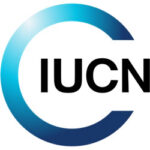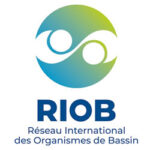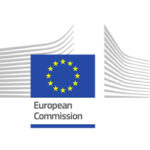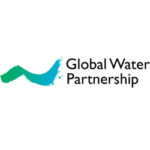STREAM – Sustainable Technologies, Resilient Engineering, and Project Management
STREAM is committed to delivering innovative, sustainable, and technology-driven solutions across diverse water-related domains.
Our portfolio demonstrates: Extensive experience in managing complex hydrological, environmental, and infrastructural projects.
A strong focus on sustainability, integrating nature-based and technology-driven solutions. A track record of successful collaborations with local governments, international organizations, and private stakeholders.
Let STREAM be your partner in crafting a water-secure future.
For inquiries, project collaboration, or additional information, contact us today!
Sustainable Technologies
At STREAM, we are committed to advancing innovative and environmentally conscious solutions in water infrastructure management. Our goal is to optimize water resources, enhance the efficiency of infrastructure, and ensure long-term sustainability while addressing the challenges of climate change, urbanization, and resource scarcity. STREAM focuses on the development of water supply systems, sewage networks, treatment plants, and irrigation systems that minimize environmental impact and prioritize resource conservation.
Harnessing renewable energy sources, including solar, wind, and hydropower, STREAM reduces the operational costs and carbon footprint of water facilities such as treatment plants and pumping stations. By employing natural water flows for hydropower generation, we provide clean energy solutions that decrease reliance on fossil fuels while enhancing energy security for communities and critical infrastructure.
STREAM utilizes cutting-edge modeling tools to predict and optimize water distribution and flow across infrastructure systems. We integrate advanced monitoring technologies, including smart meters and real-time analytics, to ensure optimal water quality, efficient usage, and the protection of surrounding ecosystems. Beyond traditional approaches, we emphasize nature-based solutions, such as restoring wetlands and riparian zones, which improve natural filtration, enhance flood resilience, and reduce stormwater runoff.
Our expertise extends to river basin management plans that safeguard water resources and promote sustainability across entire watersheds. These plans address critical issues such as water shortages, pollution control, and ecological conservation. STREAM also offers comprehensive coastal engineering solutions to mitigate the effects of sea-level rise, coastal erosion, and storm surges. By implementing protective measures such as seawalls, tidal barriers, and dunes, we safeguard coastal communities and infrastructure from climate-induced risks.
STREAM incorporates early warning systems into its projects, enabling proactive monitoring and response to extreme weather events like floods, droughts, and wildfires. These systems protect infrastructure, ecosystems, and public health, ensuring resilient and adaptive water management solutions.
Resilient Engineering
Resilient Engineering lies at the core of STREAM’s approach to water infrastructure. We design and implement systems capable of withstanding and adapting to evolving environmental conditions, including climate change and extreme weather events. This encompasses robust water supply networks, sewage systems, drainage, irrigation systems, and treatment plants tailored to handle natural disasters and future demands.
STREAM’s expertise in hydrological and hydraulic engineering allows us to create systems that manage fluctuating water levels, mitigate flooding, and ensure reliable water distribution. By employing sophisticated water modeling techniques, STREAM simulates various scenarios to anticipate risks such as flooding, water shortages, and contamination, developing proactive, community-centric solutions.
We incorporate nature-based solutions like wetland restoration and riparian zone rehabilitation into our designs. These sustainable alternatives not only enhance the resilience of infrastructure but also restore ecosystems and improve biodiversity. STREAM also delivers specialized coastal engineering solutions to address challenges such as rising sea levels and increased storm intensity. Our projects include the construction of coastal defenses, such as seawalls and flood barriers, to protect infrastructure, agricultural land, and communities from erosion and flooding.
In wildfire-prone areas, STREAM integrates forest fire mitigation strategies into water management systems. By combining firebreaks, vegetation management, and forest restoration, we protect watersheds and ensure the quality of critical water resources. STREAM’s holistic approach to resilient engineering safeguards infrastructure while fostering environmental and community resilience.
Project Management
STREAM excels in project management, ensuring that water infrastructure projects are delivered efficiently, sustainably, and on schedule. From water supply systems and sewage networks to complex flood protection and irrigation systems, STREAM’s project managers coordinate multidisciplinary teams to meet technical, environmental, and regulatory requirements.
Our process begins with executive project planning, emphasizing strategic risk assessments and stakeholder engagement. STREAM collaborates closely with local governments, communities, and international organizations to align projects with long-term water management goals. We integrate advanced hydrological, hydraulic, and environmental technologies into our designs to create adaptable systems that meet evolving demands.
STREAM’s irrigation system designs focus on optimizing water use in agriculture, supporting food security while reducing waste. Our drainage solutions enhance stormwater runoff management and flood mitigation, protecting urban and rural communities from property damage and contamination risks. Additionally, we excel in river basin management, developing strategies that balance water allocation, conserve habitats, and mitigate flood risks.
By incorporating nature-based solutions into every project, STREAM ensures ecological restoration and environmental conservation are central to our planning. Early warning systems are embedded into our designs to equip communities with tools for predicting and responding to extreme weather events. STREAM’s project management approach is rooted in sustainability and resilience, safeguarding water resources and public infrastructure for future generations.
Advanced Technology Integration in Dam Safety Monitoring
STREAM is at the forefront of innovation in dam safety monitoring, blending advanced technologies with extensive expertise in hydrology, flood management, and remote sensing. Our pioneering solutions redefine safety standards and offer unparalleled precision in assessing and managing dam infrastructure.
Through the application of multi-temporal 3D modeling with Terrestrial Laser Scanning (TLS), we deliver detailed time-series assessments that allow early detection of structural changes, fissures, and deformations. By integrating cutting-edge systems such as GNSS, INS, and UWB with vision-aided positioning, we achieve centimeter-level precision in drone-based monitoring, ensuring reliable and accurate evaluations.
STREAM also employs advanced hydrological and hydraulic modeling tools, including HEC-HMS and HEC-RAS, to optimize dam operations, assess spillway capacity, and mitigate flood risks. Our expertise extends to bathymetric measurements and sediment analysis, enabling us to evaluate reservoir performance and lifespan with unparalleled accuracy.
With a proven track record in designing multi-hazard early warning systems, STREAM incorporates meteorological, hydrological, and geological data to provide real-time risk management solutions. Our use of remote sensing technologies and GIS tools ensures precise mapping and monitoring, particularly in addressing the impacts of floods and climate change.
Delivering cost-effective, scalable, and sustainable solutions, STREAM meets the highest international standards, including ICOLD regulations, while strengthening resilience and ensuring the long-term safety of critical water infrastructure. Our commitment to innovation and excellence positions STREAM as a leader in dam safety and water resource management.
Climate Change and Nature-Based Solutions
STREAM leverages decades of expertise in hydrology, flood management, and integrated water resources to address climate change challenges through innovative, nature-based solutions (NbS). Drawing from extensive project experience, STREAM combines advanced technologies with environmentally sustainable practices to enhance ecosystem resilience and mitigate disaster risks.
Informed by projects such as the development of River Basin Management Plans and disaster risk reduction strategies, STREAM integrates hydrological and hydraulic modeling tools like HEC-HMS and HEC-RAS to analyze climate change impacts on water systems. These tools enable the design of adaptive solutions, including wetland restoration, reforestation, and sustainable floodplain management, which align with EU Water Framework Directive requirements and international climate resilience standards.
STREAM’s work emphasizes multi-hazard risk assessments and nature-based interventions to address extreme weather events. For example, our methodologies include detailed analysis of soil erosion, reforestation strategies, and the restoration of degraded land to prevent floods and droughts while reducing disaster vulnerability. By using GIS and remote sensing technologies, STREAM identifies disaster-prone areas, prioritizes interventions, and produces actionable management plans.
With expertise in early warning systems, STREAM enhances preparedness for climate-induced hazards such as floods and droughts. Our solutions are backed by field experience, including collaborative efforts with international organizations like UNESCO, WMO, and the EU. This ensures that STREAM’s work not only meets global standards but also strengthens community resilience and aligns with sustainable development goals.
Integrating climate science, advanced technology, and ecosystem-based approaches, STREAM creates robust frameworks that balance environmental preservation with climate adaptation. This comprehensive approach ensures sustainable solutions for managing water resources and protecting vulnerable communities from the growing challenges of climate change.
Coastal and Urban Water Management
STREAM applies its extensive expertise in hydrology, coastal dynamics, and urban water systems to provide innovative solutions for managing water resources in both coastal and urban environments. Drawing on years of experience in hydrological modeling, flood management, and urban planning, STREAM develops tailored approaches to address the unique challenges posed by coastal and urban water management, including climate change impacts, infrastructure resilience, and sustainable resource use.
In coastal areas, STREAM utilizes advanced tools such as bathymetric surveys, sediment analysis, and hydro-morphological modeling to address issues like coastal erosion, flood risk, and sediment transport. Through projects like the Vlora Port expansion and studies of coastal erosion under INTERREG III, STREAM has provided critical insights into shoreline dynamics, offering data-driven solutions to protect coastal infrastructure and ecosystems. The integration of numerical modeling and GIS technologies ensures precise mapping and long-term strategies for mitigating erosion and managing coastal hazards.
For urban water management, STREAM combines state-of-the-art hydraulic modeling tools, including SewerCad, WaterCad, and HEC-RAS, to design and optimize water supply, drainage, and sanitation systems. These solutions address the growing demands of urbanization while considering the impacts of climate change, such as increased flooding and water scarcity. STREAM’s expertise extends to the design of resilient urban water systems that balance cost-effectiveness with environmental sustainability.
STREAM also plays a pivotal role in flood risk management for urban and peri-urban areas, employing integrated solutions that blend traditional infrastructure with nature-based approaches. By designing early warning systems and flood protection infrastructure, STREAM helps safeguard urban communities from extreme weather events. Examples include the development of flood risk management plans for Albania’s key river basins, integrating hydrological data with urban planning to reduce vulnerability and enhance preparedness.
Combining cutting-edge technologies, extensive field experience, and a commitment to sustainability, STREAM delivers comprehensive solutions for coastal and urban water management. These approaches ensure the resilience of water systems, the protection of ecosystems, and the well-being of communities in rapidly changing environmental conditions.
Dam Safety and Infrastructure Management
STREAM is a leader in dam safety and infrastructure management, leveraging decades of expertise in hydrology, hydraulic engineering, and advanced monitoring technologies to enhance the resilience and reliability of critical water infrastructure. Our comprehensive approach integrates state-of-the-art tools, data-driven strategies, and adherence to international standards to ensure the safety and long-term performance of dams.
STREAM employs advanced techniques such as Terrestrial Laser Scanning (TLS) and multi-temporal 3D modeling for precise monitoring and condition assessments of dam structures. These technologies enable the early detection of fissures, structural deformations, and other potential risks, ensuring proactive maintenance and risk mitigation. By integrating GNSS, INS, and UWB systems, we achieve centimeter-level accuracy in drone-based inspections, providing detailed insights into the health and stability of dam infrastructure.
Our expertise extends to hydrological and hydraulic modeling using tools like HEC-HMS and HEC-RAS, which allow us to assess spillway capacity, simulate extreme flood scenarios, and evaluate the operational performance of reservoirs. STREAM also specializes in dam break analysis and flood risk modeling, ensuring robust emergency response planning and the development of early warning systems to protect downstream communities.
In addition to technological advancements, STREAM emphasizes the integration of climate resilience into dam safety management. Our work includes assessing the impacts of climate change on flood frequencies, reservoir operations, and sedimentation rates. This enables us to design adaptive management strategies that enhance the longevity and sustainability of dam infrastructure under changing environmental conditions.
STREAM’s track record includes the safety assessment of major dams, such as those in Kosovo and the Drin River Basin, where we conducted detailed hydrological modeling, dam break simulations, and early warning system design. By combining engineering excellence with cutting-edge technology, STREAM ensures the safe operation of dams while safeguarding the surrounding environment and communities.
With a commitment to innovation and sustainability, STREAM delivers comprehensive dam safety and infrastructure management solutions that meet international standards, including ICOLD regulations. This approach ensures the resilience and reliability of critical water infrastructure, supporting sustainable development and disaster risk reduction in a rapidly changing world.
Flood Risk Management and Hydrological Modelling
STREAM specializes in flood risk management and hydrological modeling, providing innovative, data-driven solutions to address flood-related challenges and ensure the safety and resilience of communities and infrastructure. By leveraging advanced technologies and decades of expertise, STREAM designs comprehensive strategies that balance engineering excellence with sustainable water management practices.
Our flood risk management solutions begin with state-of-the-art hydrological and hydraulic modeling using tools such as HEC-HMS, HEC-RAS (1D and 2D), and ArcGIS. These tools enable the simulation of complex hydrological processes, floodplain dynamics, and extreme weather events. STREAM conducts detailed assessments of river basins, catchments, and urban areas to identify vulnerable zones, optimize flood defenses, and develop adaptive strategies that account for climate change impacts.
STREAM is experienced in designing flood risk management plans (FRMPs) for major river systems, such as the Erzen, Ishem, and Vjosa Rivers in Albania. These plans integrate technical, environmental, and socio-economic considerations, ensuring the protection of critical infrastructure and downstream communities. Our work includes evaluating the effectiveness of flood mitigation measures, such as embankments, weirs, and retention basins, while also exploring nature-based solutions like wetland restoration and reforestation to complement traditional infrastructure.
In addition to planning and design, STREAM plays a key role in implementing flood monitoring and early warning systems. By integrating real-time hydrometeorological data with advanced forecasting models, we provide actionable insights to enhance preparedness and emergency response. Our expertise in early warning systems includes developing multi-hazard platforms that address floods, flash floods, and other natural risks.
STREAM’s contributions extend to international projects, including flood modeling and risk management in transboundary river basins like the Drin-Buna system. Here, we developed integrated hydrological models and reservoir operation scenarios to minimize peak flows and flood impacts. Our work has demonstrated how timely management and optimized reservoir operations can significantly reduce flood risk and safeguard downstream areas.
By combining cutting-edge technology, climate resilience, and sustainable practices, STREAM delivers robust flood risk management solutions tailored to the needs of each project. This comprehensive approach ensures effective flood protection, enhances community resilience, and aligns with international frameworks, including the EU Water Framework Directive and sustainable development goals.
Irrigation and Agricultural Management
STREAM combines expertise in hydrology, hydraulic engineering, and sustainable resource management to deliver innovative solutions for irrigation and agricultural systems. With extensive experience in designing and optimizing water supply networks, STREAM addresses the unique challenges of agricultural water management while promoting sustainability and efficiency.
STREAM’s approach begins with advanced hydrological and hydraulic modeling to assess water availability, demand, and distribution. Using tools such as HEC-HMS, HEC-RAS, and AutoCad, we design tailored irrigation systems that maximize water use efficiency and minimize losses. Our expertise extends to the development of gravity-fed, pump-based, and hybrid irrigation networks, ensuring effective water delivery to meet agricultural needs.
Our projects include feasibility studies, detailed designs, and implementation of irrigation systems for diverse regions. For example, STREAM has designed irrigation schemes for Albania’s Murriz Thana, Zharreza, and Vranisht areas, addressing challenges like soil erosion, water scarcity, and climate change impacts. These projects incorporated hydrological and hydraulic modeling to ensure optimal system performance and sustainable water resource use.
STREAM integrates nature-based solutions into irrigation management by promoting soil and water conservation practices such as reforestation, terracing, and wetland restoration. These measures not only enhance water retention and reduce erosion but also contribute to broader climate adaptation efforts. Additionally, we use GIS and remote sensing technologies to map and monitor water resources, optimize irrigation schedules, and support decision-making for agricultural stakeholders.
Our expertise also includes the rehabilitation and modernization of existing irrigation infrastructure to improve efficiency and climate resilience. By incorporating advanced automation and remote monitoring systems, STREAM enables real-time management of irrigation networks, reducing operational costs and enhancing performance.
STREAM’s commitment to sustainability extends to developing irrigation strategies that align with international standards and frameworks, such as the EU Water Framework Directive and sustainable development goals. By combining engineering excellence, innovative technology, and a deep understanding of agricultural needs, STREAM delivers comprehensive solutions that support sustainable agriculture and improve water resource management in rural and peri-urban areas.
Sustainable Water Resources Management
STREAM is committed to advancing sustainable water resource management through integrated approaches that balance environmental protection, social needs, and economic development. With extensive expertise in hydrology, hydrometeorology, and water systems engineering, STREAM provides innovative solutions to ensure the long-term availability and resilience of water resources.
Our approach begins with detailed assessments of water availability, quality, and demand using advanced tools such as HEC-HMS, ArcGIS, and Global Mapper. STREAM develops comprehensive water management plans that integrate surface and groundwater resources, considering the impacts of climate change, population growth, and urbanization. By using cutting-edge modeling and remote sensing technologies, STREAM ensures precise evaluations and actionable strategies for managing water systems sustainably.
STREAM has extensive experience in river basin management, aligning projects with frameworks like the EU Water Framework Directive. This includes the development of river basin management plans (RBMPs) for major watersheds, such as the Ishem, Erzen, and Mat Rivers in Albania, addressing water allocation, pollution control, and ecosystem protection. These plans prioritize sustainable practices, such as improving water use efficiency and reducing over-extraction, to balance competing demands across agricultural, urban, and industrial sectors.
Our expertise also includes designing and implementing early warning systems to monitor and mitigate risks to water resources, such as floods, droughts, and pollution events. STREAM’s work in hydrometeorological network planning, adhering to WMO standards, ensures robust data collection and analysis for informed decision-making. Additionally, our climate resilience strategies integrate nature-based solutions, such as wetland restoration and reforestation, to enhance water retention and reduce runoff.
In urban and peri-urban areas, STREAM designs sustainable water supply, sanitation, and stormwater management systems that address the challenges of water scarcity and increasing demand. Using hydraulic modeling tools like SewerCad and WaterCad, we optimize infrastructure to reduce water losses, improve efficiency, and ensure equitable access.
Integrating technical innovation, environmental stewardship, and stakeholder engagement, STREAM delivers sustainable water resource management solutions that meet the highest international standards. Our work ensures that water resources remain protected and resilient, supporting ecosystems, communities, and economies for generations to come.
Early Warning Systems Design and Monitoring Infrastructure Implementation
STREAM excels in the design and implementation of early warning systems (EWS) and monitoring infrastructure to mitigate risks from natural hazards such as floods, droughts, and other extreme weather events. Combining expertise in hydrology, meteorology, and advanced technology, STREAM provides comprehensive solutions that enhance preparedness, safeguard communities, and protect critical infrastructure.
Our early warning systems are built on a foundation of advanced hydrological and hydraulic modeling tools, including HEC-HMS, HEC-RAS, and GIS platforms. These tools allow STREAM to simulate hazard scenarios, analyze risk levels, and develop predictive models that provide timely and accurate warnings. STREAM integrates real-time hydrometeorological data with advanced algorithms to enable proactive decision-making and efficient disaster management.
STREAM has designed and implemented multi-hazard early warning systems tailored to the unique needs of each project. For example, the Albanian Early Warning System for Multihazards (Meteorological, Hydrological, Flood, Geological, and Forest Fires) was developed to provide a comprehensive risk management framework. This system combines meteorological forecasting, flood modeling, and geospatial analysis to deliver actionable insights and alerts to stakeholders and communities.
The monitoring infrastructure implemented by STREAM includes high-precision hydrometeorological stations, telemetry systems, and remote sensing technologies. These systems ensure accurate data collection, real-time transmission, and seamless integration with early warning platforms. STREAM’s expertise in network planning and compliance with WMO standards ensures that monitoring systems are robust, scalable, and reliable under extreme conditions.
STREAM also specializes in stakeholder engagement and capacity building, ensuring that local authorities and communities are equipped to interpret and act on early warnings effectively. Through training programs and user-friendly interfaces, STREAM enhances the accessibility and usability of early warning systems, promoting a culture of preparedness and resilience.
By combining state-of-the-art technology, innovative modeling techniques, and a commitment to sustainability, STREAM delivers early warning systems and monitoring infrastructure that save lives, reduce economic losses, and support long-term risk management. These solutions align with global standards, including the Sendai Framework for Disaster Risk Reduction and sustainable development goals, solidifying STREAM’s role as a leader in hazard mitigation and resilience building.
Water Supply and Sewage Design
STREAM specializes in the design and optimization of water supply and sewage systems, combining advanced engineering solutions with sustainable practices to address the growing demands of urbanization, population growth, and climate change. With extensive experience in hydraulic modeling, infrastructure planning, and project management, STREAM provides tailored solutions that enhance the efficiency, reliability, and sustainability of water systems.
For water supply systems, STREAM utilizes advanced tools such as WaterCad, SewerCad, and HEC-RAS to develop hydraulic models that ensure optimal performance. From the initial feasibility studies to detailed designs, STREAM focuses on maximizing water distribution efficiency, reducing losses, and ensuring equitable access to safe drinking water. Our designs incorporate modern automation and monitoring technologies, enabling real-time control and management of water distribution networks. STREAM has successfully delivered water supply designs for urban centers such as Gjirokastër, Berat, and rural areas like Gramsh, ensuring reliable service across diverse settings.
In sewage system design, STREAM addresses challenges related to wastewater collection, treatment, and disposal by integrating advanced modeling and innovative engineering practices. Our designs prioritize environmental sustainability, meeting stringent regulatory standards while minimizing operational costs. STREAM’s expertise extends to the planning of sewer networks, stormwater drainage systems, and wastewater treatment facilities, ensuring that systems are designed to accommodate future growth and withstand extreme weather events.
STREAM’s approach incorporates sustainable and nature-based solutions, such as green infrastructure and constructed wetlands, into traditional designs. These solutions not only improve water quality and reduce pollution but also enhance resilience to flooding and urban runoff. By integrating GIS and remote sensing technologies, STREAM conducts detailed site assessments and optimizes the placement and functionality of water and sewage infrastructure.
With a strong focus on cost-effectiveness and long-term sustainability, STREAM ensures that its water supply and sewage designs align with international standards and frameworks, such as the EU Water Framework Directive. By combining technical innovation, environmental stewardship, and stakeholder collaboration, STREAM delivers comprehensive solutions that support the sustainable management of water resources and the well-being of communities.
Flow and Meteorological Forecasting Products Across Scales and Purposes
STREAM integrates its expertise in hydrometeorology and advanced modeling technologies to develop demand flow and meteorological forecasting products tailored to various scales and applications. These products play a critical role in optimizing water resource management, enhancing disaster preparedness, and supporting sustainable development.
At the local scale, STREAM designs detailed meteorological forecasting systems for applications such as municipal water supply management, irrigation planning, and urban stormwater systems. Using real-time data from localized weather stations and hydrological models like HEC-HMS and ArcGIS, these systems provide precise short-term forecasts to support immediate decision-making, such as optimizing water distribution during peak demand or mitigating urban flooding.
For the regional scale, STREAM develops products that address transboundary river basins and larger watersheds. These forecasting systems combine meteorological, hydrological, and hydraulic data to simulate complex processes like river flow, reservoir dynamics, and flood risks. Examples include demand flow products for regional irrigation systems or hydropower plants, ensuring efficient allocation of water resources and minimizing environmental impacts. STREAM has implemented such systems for the Drin-Buna Basin, integrating multi-reservoir operations with flood risk modeling to enhance regional water and energy security.
At the national scale, STREAM creates forecasting platforms to manage large-scale infrastructure and natural resource systems. These include early warning systems for multi-hazard scenarios, incorporating meteorological forecasts, flood modeling, and seasonal demand analysis. Such products are used for policy-making, emergency planning, and resource allocation, particularly in drought-prone or flood-vulnerable areas. For example, STREAM’s work on the Albanian Early Warning System included forecasting demand flows for national-scale water supply and agricultural needs during extreme weather events.
For global or cross-border applications, STREAM participates in projects that align with international frameworks, such as the EU Water Framework Directive and WMO standards. These systems provide long-term forecasts and climate impact assessments, addressing issues such as water availability under changing climatic conditions or predicting transboundary flood events. These forecasting products support international collaboration and sustainable management of shared water resources.
Combining data from ground-based stations, satellite remote sensing, and predictive models, STREAM ensures that its demand flow and meteorological forecasting products are accurate, scalable, and adaptable. These tools are designed to meet the specific needs of users across scales, from local water utilities to international water management organizations, ensuring informed decisions and sustainable outcomes.





